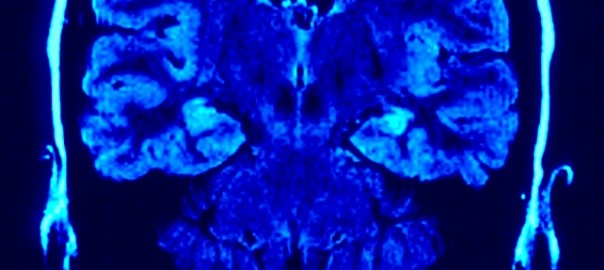
Neural implants aren’t exactly new to the medical field, although they may seem “Jetsonian” still. Nerve stimulating implants and brain pacemakers, for instance, have forever changed how we study and treat conditions observed in the brain such as Parkinson’s, deafness, blindness, and even clinical depression. The evolution of neural technologies has been exciting to watch unfold in 2013 as medical researchers have been able to interact with and manipulate the human memory.
The scientists at the helm of these studies are reasonably modest in their implications, but the desperate need for improvements to memory care (particularly for individuals with Alzheimer’s Disease) warrants a fuller exploration of any such new advancements. Alzheimer’s Disease (AD) currently affects 36 million people worldwide, most of whom are seniors. There is no cure for AD and less than 2% of patients live longer than 14 years after initial diagnosis.
Memory research is also important to patients with Parkinson’s Disease, Huntington’s Disease, brain damage, and dementia, among others. While this year’s breakthroughs aren’t curative in nature, their contributions to the demystification of the human brain are significant with infinite, unknown applications.
Among MIT’s Ten Breakthrough Technologies of 2013 is recognition of Theodore Berger, the neuroscientist and engineer behind a study about forming long-term memories stored outside of the brain. Berger and his team at the University of Southern California in Los Angeles used electrodes to read the changes that happen in the hippocampus when a memory is formed; those changes were then expressed as mathematical equations and stored in an externally-implanted silicon chip.
This silicon chip acts like a neurological hard-drive, if you will, backing up your memories and retrieving them when necessary. The chip was shown to help relieve some of the symptoms of dementia associated with the early stages of Alzheimer’s Disease, but these benefits were not seen in cases of severe memory loss; still, Berger is confident that implants like his will be part of effective treatments in the future.
“I think the best strategy is going to involve both drugs and devices,” he says.
Berger is hopeful – almost certain – that his findings will hit the ground running, leading to quite a few other advancements in memory care.
“I do think we’re going to find a model that’s pretty good for a lot of conditions and maybe most conditions,” says Berger. “The goal is to improve the quality of life for somebody who has a severe memory deficit.”
Doug Brown, the director of research and development at London-based Alzheimer’s Society, seems hopeful about the study of devices like Berger’s.
“Finding ways to combat symptoms caused by changes in the brain is an ongoing battle for researchers. An implant like this one is an interesting avenue to explore,” says Brown.
Needless to say, Berger’s astounding work holds a lot of promise for patients in need of memory care and their loved ones, so what developments are in the works that consumers might soon benefit from? Currently, Berger is applying his knowledge of electrodes and neuroscience to a study at USC’s Keck School of Medicine with the goal of predicting and preventing seizures in humans with severe forms of epilepsy using neurostimulation paradigms.
If successful, such technology would be life-changing for epileptic individuals, especially those with rare but devastating seizure syndromes for which little research exists, such as Dravet
Syndrome or Lennox-Gastaut Syndrome.
Even for consumers without memory disorders or neurological syndromes, studying how the brain recalls memories could significantly impact society and societal structures.
According to Steve Ramirez, all memory is reconstruction. Ramirez is the lead author of a paper, detailing a breakthrough success in altering or transplanting memories. His team of researchers at the RIKEN-MIT Center for Neural Circuit Genetics were successful in manufacturing memories in mice, who were able to “recall” the fake memories and act on them.
“Our hope is that, by proposing a neural explanation for how false memories may be generated, down the line we can use this kind of knowledge to inform, say, a courtroom about just how unreliable things like eyewitness testimony can actually be,” says Ramirez.
Their test mice, given to wander in two “rooms,” would be greeted with a slight shock and flash of light in one room, but nothing in the other. Ramirez and his team were able to pinpoint the mice’s memories of these rooms in the hippocampus and transpose one to the other, switching the fearful memory of one room with the safe memory of another. Naturally, the mouse chose to enter the room that his altered memory told him was safe.
The research team aims to use the data to further investigate how false memories are created organically and the conditions causing certain memories to form differently than others. Other scientists, such as Mark Mayford of the Scripps Research Institute, are excited about the ways this data could inform research about thought construction and provide relief for the mentally ill.
“The implications are potentially interventions for diseases of thought such as schizophrenia. You cannot approach schizophrenia unless you know how a perception is put together.”
Even though no comprehensive treatments or cures have been developed for seniors and consumers with neurological deficiencies in 2013, these baffling discoveries give buoyant hope for the advancements awaiting us in the new year.
Sources:
MIT: Ten Breakthrough Technologies of 2013
http://www.technologyreview.com/lists/breakthrough-technologies/2013/
Brain implants: Restoring memory with a microchip
http://www.cnn.com/2013/05/07/tech/brain-memory-implants-humans/
Creating a False Memory in the Hippocampus
http://www.sciencemag.org/content/341/6144/387
The RIKEN-MIT Center
http://picower.mit.edu/About/riken-mit-center
Scientists can implant false memories into mice
http://www.bbc.co.uk/news/science-environment-23447600
Researchers Implant False Memories Into Mice Brains
http://mashable.com/2013/08/04/false-memories/
Mice “incepted” with false memories provide insight into neural phenomena
http://www.riken.jp/en/pr/press/2013/20130726_1/